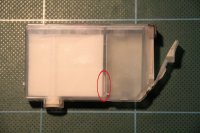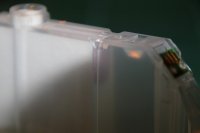andy_48
Fan of Printing
- Joined
- Apr 8, 2013
- Messages
- 74
- Reaction score
- 48
- Points
- 58
- Location
- UK
- Printer Model
- Pixma iP8750; Pixma MG6650
I, like many others on this forum, have had repeated problems with clogged nozzles and head failures, invariably (or, seemingly) connected with Magenta and Photo Magenta inks. To try and counter the problem, I've upped my game on the 'hygiene' management of my printers and my carts.
I've read countless posts and watched many videos (especially mikling's excellent and informative series http://www.precisioncolors.com/Maintenance_Canon.html) until I'm magenta in the face. I flush carts using Martin at Octoinkjet's method https://www.youtube.com/watch?v=YGvtuAT1KNo and his syringes, clips and other kit. I use water, pharmacist's solution and Lidl's W5 (UK equivalent to Windex) as appropriate and have been refilling with IS ink also from Octoinkjet.
I flush and I flush.
So. Why am I finding it hard to completely clean my Magenta carts? On some (not all) I just can't shift the colour from the area ringed in the first photo and just about visible in the second.


1. Does it matter? Is it vital that this bit is squeaky clean?
2. If so, what else can I try or will I have to bin the cart?
I've read countless posts and watched many videos (especially mikling's excellent and informative series http://www.precisioncolors.com/Maintenance_Canon.html) until I'm magenta in the face. I flush carts using Martin at Octoinkjet's method https://www.youtube.com/watch?v=YGvtuAT1KNo and his syringes, clips and other kit. I use water, pharmacist's solution and Lidl's W5 (UK equivalent to Windex) as appropriate and have been refilling with IS ink also from Octoinkjet.
I flush and I flush.
So. Why am I finding it hard to completely clean my Magenta carts? On some (not all) I just can't shift the colour from the area ringed in the first photo and just about visible in the second.


1. Does it matter? Is it vital that this bit is squeaky clean?
2. If so, what else can I try or will I have to bin the cart?


